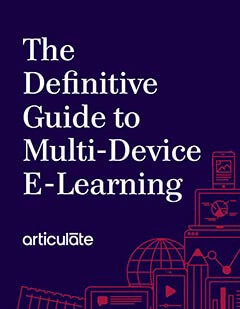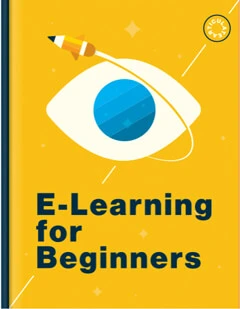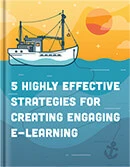Rise 360: How to Use Process Blocks
Article Last Updated
This article applies to:
When you use process blocks in your Rise 360 courses, introducing linear concepts and letting learners move through sequential steps is a snap. It’s as easy as 1-2-3!
Craft a carousel of media-rich steps with or without an introduction and summary. Click here to see a video demonstration and check out the details below.
- Insert a Process Block
- Modify the Introduction and Summary
- Add and Modify Steps
- Customize the Block Settings
- Accessibility Information
| Create a Process Block with AI Assistant Easily create process blocks with AI Assistant. Start from scratch or use AI-powered suggestions to tweak and transform existing content into a process block in no time! Learn how to use AI Assistant to level up your course authoring game. |
Step 1: Insert a Process Block
- Open a Rise 360 course, then edit an existing lesson or create a new one.
- Select the process block from the blocks shortcut bar.
You can also
- Click the All Blocks button on the blocks shortcut bar or click the insert block icon that appears when you mouse over a boundary between blocks.
- From the sidebar, choose the Interactive category, then select Process.
Step 2: Modify the Introduction and Summary
By default, an introduction and summary appear before and after the numbered steps in your process interaction. The introduction has a button that starts the process, and the summary has a button that takes you back to the beginning when you’re finished. Here's how to edit the introduction and summary or turn them off if you don’t need them.
- Hover over the block to access the left-hand design toolbar. Click the Content icon.
- Change the introduction and summary titles if you prefer different wording.
- Modify the body text and add any media you’d like.
- If you don’t need an introduction or summary, click the eye icon to the left of each title in the sidebar to hide one or both. When they’re disabled, your process starts with the first step in the interaction and ends with the last step, and there’s no option to automatically jump back to the beginning.
Step 3: Add and Modify Steps
There are a lot of ways you can modify your steps, from adding text to importing media.
- From the content screen, click the Add Step button at the bottom of the sidebar to add steps to the process. Drag steps up and down the sidebar to reorder the list. Steps are automatically numbered and will renumber themselves when you rearrange them.
- Select each step in your interaction, then do any of the following.
Add Text
Edit (or delete) the title and body text.
Add Media
Click the camera icon to upload an image or video, browse the Content Library 360, or embed web content (such as a YouTube video). Once added, you can change the alignment, adjust the crop on images, and add alt text. Media displays between the title and description text for each step.
Add Audio
Click the microphone icon to upload an audio file or record narration. You can pause while recording, but Rise 360 won’t save your in-progress recording until you click Stop Recording. - If you need to delete a step, hover over it in the sidebar and click the garbage bin icon that appears.
- When you’re finished, click Close in the upper right corner to return to your block lesson.
Navigation Tips for Learners: On desktop computers, learners navigate a process block by clicking the previous and next arrows or using the step counter below the interaction to jump between steps. On tablets and smartphones, learners navigate a process block by swiping back and forth. A numbered step counter displays but isn't clickable on mobile devices.
Step 4: Customize the Block Settings
Modify how your content looks on the screen by hovering over an existing block to access the left-hand design toolbar. Click the Style icon to access block background options. You also have the option to maintain a white background for cards when you modify the block background. The Format menu provides options for changing the block padding, toggling or customizing the step label, as well as disabling zoom for images.
You can also apply Heading Levels. These provide structure to your content to make it more accessible when read by assistive devices.
Tip: Add a continue block after your process block when you want learners to complete it before moving on.
Accessibility Information
Process blocks are accessible. If you use media, ensure images have alternative text (alt text) and videos have closed captions. If you update the background color, check contrast colors to ensure text is readable. Conduct testing with keyboard navigation and screen readers to ensure accessibility. For further guidance on creating accessible content, refer to our accessibility design tips below:


